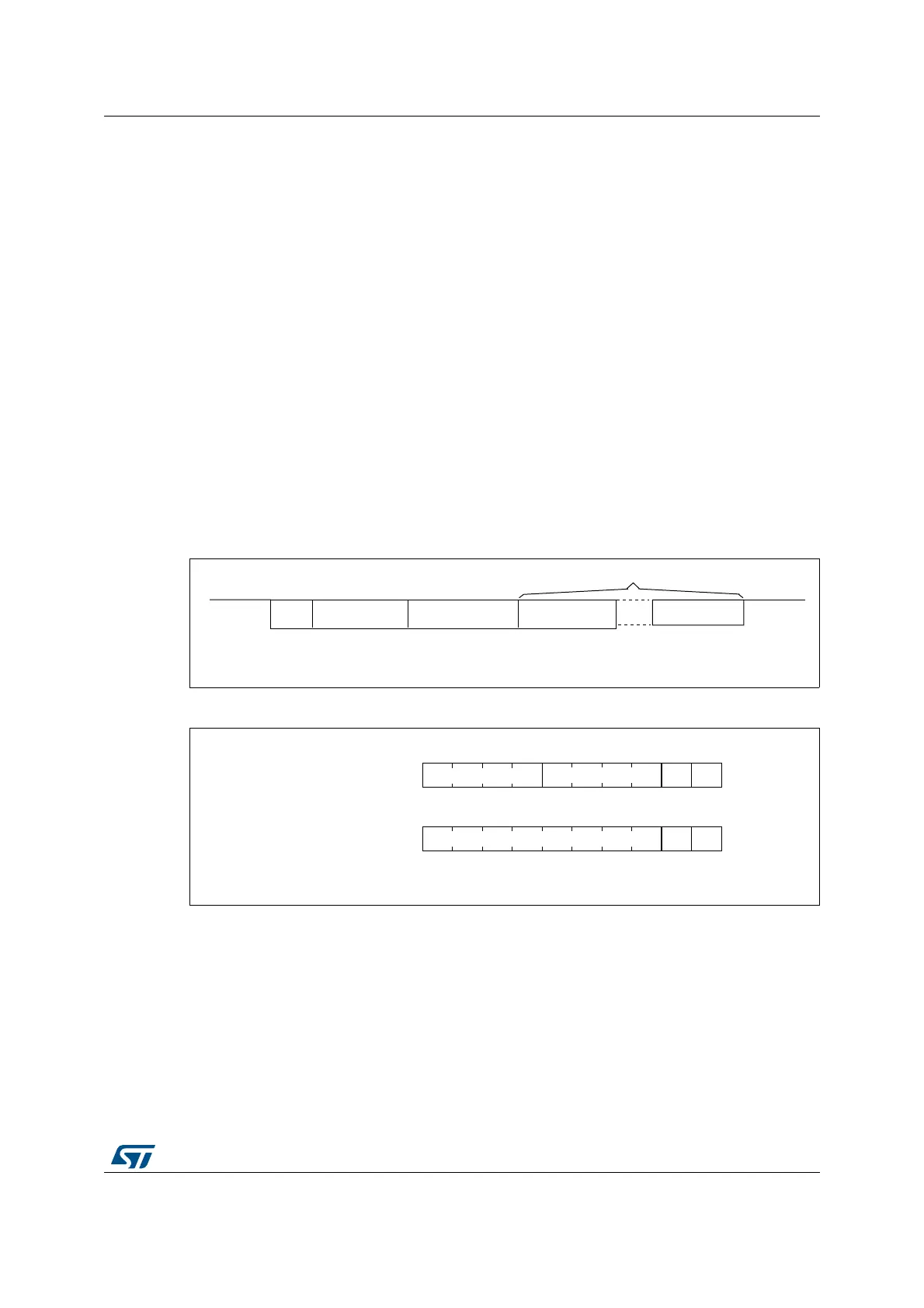RM0390 Rev 4 1267/1328
RM0390 HDMI-CEC controller (HDMI-CEC)
1283
32.3.3 Message description
All transactions on the CEC line consist of an initiator and one or more followers. The
initiator is responsible for sending the message structure and the data. The follower is the
recipient of any data and is responsible for setting any acknowledgment bits.
A message is conveyed in a single frame which consists of a start bit followed by a header
block and optionally an opcode and a variable number of operand blocks.
All these blocks are made of a 8-bit payload - most significant bit is transmitted first -
followed by an end of message (EOM) bit and an acknowledge (ACK) bit.
The EOM bit is set in the last block of a message and kept reset in all others. In the event
that a message contains additional blocks after an EOM is indicated, those additional blocks
should be ignored. The EOM bit may be set in the header block to ‘ping’ other devices, to
make sure they are active.
The acknowledge bit is always set to high impedance by the initiator so that it can be driven
low either by the follower which has read its own address in the header or by the follower
which needs to reject a broadcast message.
The header consists of the source logical address field, and the destination logical address
field. Note that the special address 0xF is used for broadcast messages.
Figure 433. Message structure
Figure 434. Blocks
32.3.4 Bit timing
The format of the start bit is unique and identifies the start of a message. It should be
validated by its low duration and its total duration.
All remaining data bits in the message, after the start bit, have consistent timing. The high to
low transition at the end of the data bit is the start of the next data bit except for the final bit
where the CEC line remains high.
069
KLJK
LPSHGDQFH
67$57
%,7
+($'(5
23&2'(
WRRSHUDQGV
23(5$1'
23(5$1'
KLJK
LPSHGDQFH
(20 $&.
'(67,1$7,21>@,1,7,$725>@
+($'(5%/2&.
(20 $&.
'$7$>@
23&2'(23(5$1'%/2&.
069

